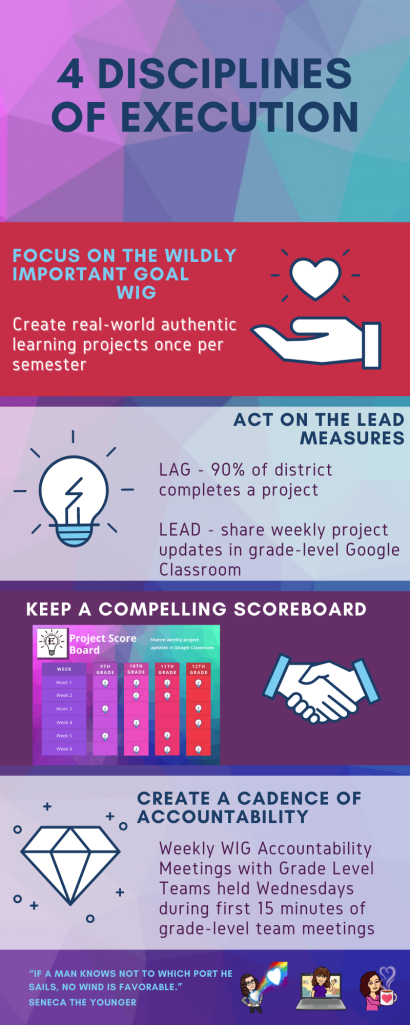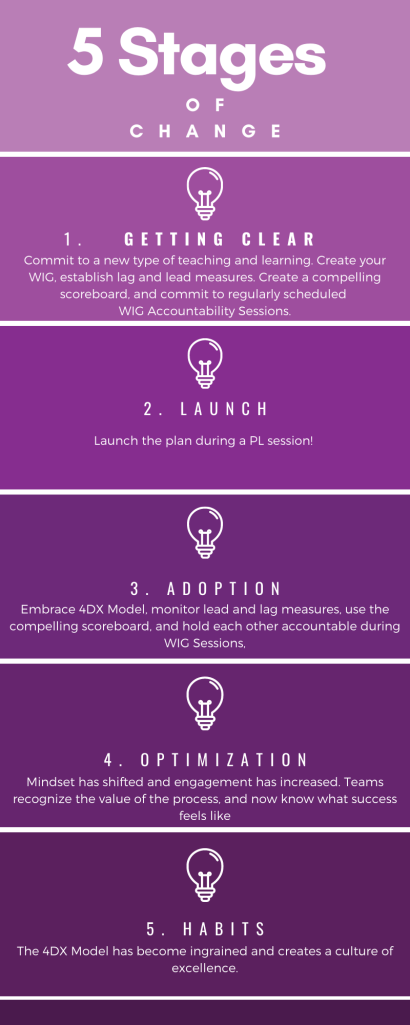Elgin ISD is a small rural district in which the whirlwind is extremely strong. Teachers and administrators are pulled and pushed by a top-heavy district administration, challenges with literacy and language acquisition, intermittent internet access, low academic performance, and the list goes on. That being said, two years ago a group of teachers gathered together and held a district Hour of Code night in December of 2018 which was very well-attended, and we realized at that time, that our community valued opportunities in critical, analytical thinking applications for their children. When we partnered with Apple two years ago, we were able to expand community engagement through our Coding Camp, and by leveraging assets at all of our campuses, we now have hundreds of our students utilizing digital tools in their classrooms. These events have helped us to recognize a significant change in teaching and learning is necessary despite the power of the whirlwind in our school district. Our Innovation Plan grew out of these experiences.
The 4DX Model emphasizes specific strategies to help organizations implement successful change. To be successful, the 4DX Model has to be agreed upon as a team so that there is team-wide consent in the path forward to create change. As mentioned in the book, “to achieve a goal you have never achieved before, you must start by doing things you have never done before” (McChesney, 2012).

Discipline 1 – Focus on the Wildly Important
Though there are many valuable goals to be pursued in an organization, the team must determine the goal that will make the biggest impact. This goal is labeled the Wildly Important Goal (WIG) and guides the path forward for the team’s change strategy. It should be approached as: from x to y by when.
Discipline 2 – Act on Lead Measures
The lead measures are measures of activities most connected to achieving the WIG, while lag measures determine whether the goal was achieved. Many times in organizations, only lag measures are focused upon, and lead measures are not clearly articulated. However, lead measures are steps taken to accomplish the WIG. These measures must be defined and a system of accountability established and maintained.
Discipline 3 – Keep a Compelling Scorecard [Click here for a PDF of the Scorecard]
In order for the lead measure to be successfully implemented, a visible, dynamic scoreboard must be created and maintained. The scoreboard holds everyone accountable and moves the change strategy forward. There are many different types of scoreboards and the team must decide which scoreboard to use that meets their lead measure with fidelity.
Discipline 4 – Create a Cadence of Accountability
In order to help individuals find the time to work on the WIG, they must be accountable to their team. That will help them to prioritize their lead measures within the daily whirlwind to work on achieving the goal. This accountability system should be a series of regularly-scheduled, short, WIG-focused meetings in which each team member reports on progress and determines next steps. Every member of the team, including the leader, must be accountable in these meetings, to their team and to its goal.

Influencer vs 4DX
Our district is a small, rural school district made up of 6 schools, elementary to high school. We face serious academic challenges and have low school report cards at all but the high school. We know that implementing change is important, and we also know that making a change in our specific district environment will be difficult given the focus on accountability as the driver of instruction. Asking teachers to change the way they teach, even just once per semester, will be a challenge and we will need to use the Influencer model to change hearts and minds. Using the Influencer model will give our teachers an opportunity to experience real-world authentic learning in a new way. The 4DX model is the process we will use to implement the change. We understand that we will need to use the Influencer and 4DX models in conjunction to create consent from the beginning of this shift in teaching and learning.
References:
Grenny, J., Patterson, K., Maxfield, D., McMillan, R., & Switzler, A. (2013). Influencer: The new science of leading change. New York, NY: McGraw-Hill Education.
McChesney, C., Covey, S., & Huling, J. (2016). The 4 disciplines of execution: Achieving your wildly important goals. New York, NY: Free Press.